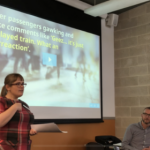Change Your Reactions: the TV ad campaign that will change the way people think about autism
Posted on
In July, Amaze sought community feedback on four potential concepts for a public education campaign to build understanding of autism.
I’m writing to thank those who participated in the project and to let you know about the decisions we’ve made since that consultation and to update you on campaign progress.
How it began
In 2017 Amaze commissioned research to measure the level of understanding of autism by the broader community. A second study explored the views and experiences of autistic people and their families about how they are treated in society.
The research showed that while 98% of Australians have heard of autism and 85% have contact with an autistic person, there is a very big gap between this awareness and an autism-literate/friendly community.
Only 29% of Australians agree that they have a good understanding of how to support autistic people. For autistic people and their families, general community understanding feels much lower. Only 4% of autistic people and their families agree that people in the community know how to support autistic people. You told us that most people don’t know how autism might affect someone’s behaviour and that you experience high levels of negative responses from the community.
With funding from the Victorian Government, we set out to develop a campaign that works to change this.
Goals of the campaign
The campaign has three goals:
· More Victorians understand the facts and reject common myths and misperceptions about autism
· More Victorians know how to act and what to do to support autistic people
· Autistic people and their families feel better understood and included by society.
Getting input to the campaign design
We learned a great deal from our colleagues at The National Autistic Society in the United Kingdom, where the Too Much Information campaign has been very successful.
Our brief to three different creative agencies was underpinned by the Amaze research and other international behaviour change campaigns.
Once concepts were developed, we had a workshop exploring an initial six concepts with key organisations for autism in Victoria – Yellow Ladybugs, Asperger’s Victoria, I CAN Network, Autism Family Support Association, and Autism Intersections. With their input, we narrowed down to four concepts and made further adjustments.
We then took the campaign out to test in research; we called this ‘twin track testing’ because we tested it with two very different audiences.
The first, was the target audience, the general community. We wanted to know which creative concept best achieved the goals of the campaign. We were specifically seeking which concept was most relevant to them personally, ‘stood out’ the most, taught them something new about autism, best-built understanding of autism and the experiences of autistic people, and best showed how to support an autistic person.
The second audience was the autism community. We wanted to ensure the authenticity of the campaign and to check that no harm was caused by any of the concepts. We specifically asked if each concept was an accurate portrayal, if there were any concerns about the script, if it built understanding of how autism impacts people and if it showed people how to act to support autistic people.
For the autism community, we sent out an online survey with mock videos (storyboards) of each concept to our network of thousands of autistic people, families and carers, and those who work in the sector who are all regularly in touch with Amaze.
Many of the other autism organisations also shared the survey with their network. 237 people participated in the online survey, 54 of whom are autistic (23%) with the rest of those participating being family members.
A face to face consultation was also held at Araluen Centre with 12 young people with complex support needs.
What we learned from the campaign testing
The research told us that Change Your Reactions campaign best achieved the goals of the campaign with the target audience – the general Victorian community. To them, this was the most preferred and memorable tagline. They understood that the campaign is saying ‘don’t judge’, and that we can all make a difference through our actions.
For the autism community, we learned that it is vital that the campaign:
• Illustrates the diversity of spectrum
• Shows autistic adults as well as children
• Shows autism’s strengths as well as its challenges
Of the four campaigns, “This is my normal. This is my autism” and “Change Your Reactions” were the two campaigns that performed best for the autism community, but there were some concerns that needed adjustment in the scripts.
There were, of course, many differences in the responses. Some people wanted a clear call to action for the general community, while others wrestle with this idea. Some people loved one campaign over all the others, some didn’t like any of them. We understand this, as we understand that the experience of autism is different for every autistic person.
Campaign choice
The decision has been made to produce Change Your Reactions – with some adjustments. The research showed us that this is the campaign that has the best chance of building community understanding.
The content of Change Your Reactions
We have designed this campaign to directly reach the Victorian public – more than six million of them.
To be successful the campaign has to connect emotionally and say something quite direct. It also means that in creating an advertisement that will have an emotional impact on the general public, we have to show autistic people having a negative or difficult experience. The complexities and huge variability of autism and individual’s personal experiences are difficult to convey in a short space of time.
With the feedback received we are now producing three television commercials for the launch:
• A worker in an office experiencing light sensitivity
• A mother and child in a supermarket, with the child having a meltdown
• A customer in a café with his carer, having difficulty communicating with a stranger.
Sensory sensitivity, meltdown, and difficulty in social interactions are three of the key things autistic people and their families have consistently told us they would like the general public to understand about how autism can affect people.
Autistic people and their families stay at the centre
Consistent with Amaze’s philosophy, the involvement of the autistic community is what will give this campaign authenticity and integrity. Your priorities, insights, and concerns have informed each step of our work. While we know that not every person will love every element, your continuing input and voice are vital.
In the campaign, our lead actors who are portraying autistic characters are autistic themselves. We look forward to introducing you to them.
We hope that this is just the start of a three-year campaign, where each year we can show a mix of experiences and the diversity of autistic Victorians.
Because we are dealing with a community whose level of understanding of autism is pretty low to begin with, we have to take people on a journey, build their understanding bit-by-bit, and make sure that over a longer period of time we are building a society that works for autistic people.
In the supporting stories that we will share through the campaign, we will continue to use a broad range of autistic people, to show how every autistic person is different.
We will keep you in touch with how the campaign progresses, and hope that you will share it with your networks, to work towards an inclusive Victoria that understands, accepts, and positively engages with autistic people.
Braedan Hogan | Acting Chief Executive Officer


